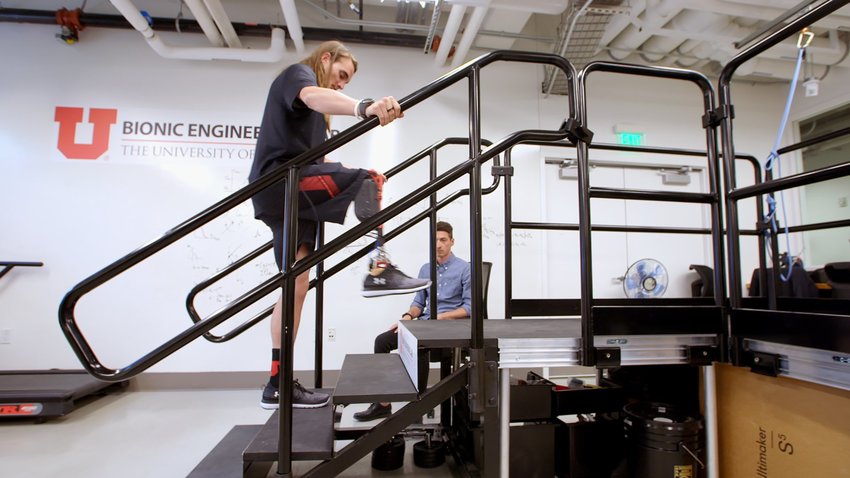Exoskeleton lets amputees walk effortlessly
A new exoskeleton development by University of Utah researchers restores missing strength to affected individuals.

Researchers led by Tommaso Lenzi of the University of Utah's Bionic Engineering Lab have developed a new experimental exoskeleton for amputees. It attaches to the waist and stump of the leg and is equipped with motors powered by a battery. A microprocessor coordinates the movements so the disabled person has no trouble walking like a healthy person.
Half dozen tests
A standard leg prosthesis for amputees cannot fully take over the biomechanical functions of a human leg. Therefore, walking puts a lot of strain on amputees because they have to overexert the remaining muscles in order to progress. Lenzi's exoskeleton fully compensates for the lack of strength. Half a dozen disabled people are currently testing the device.
The device has a lightweight, efficient electromechanical actuator. A belt around the waist contains custom electronic systems, microcontrollers and sensors that run advanced control algorithms.
"The exoskeleton's artificial intelligence can track how a person moves and assist them in doing so," says Lenzi's Ph.D. student Dante A. Archangeli.
2.5 kilogram heavy
Unlike other exoskeletons, which are relatively heavy and therefore consume a lot of energy, Lenzi's model is very light at around 2.5 kilograms. It was limited to providing just as much power as the disabled person actually needs. He compares it to an e-bike, whose motor helps the rider pedal but does not do all the work.
Above-the-knee amputation reduces the mobility and quality of life of millions of people because much of the leg muscle is removed during surgery. "As a result, walking is difficult, although the person can still move in the hips," Lenzi explains. Above all, he says, there is a lack of strength.









